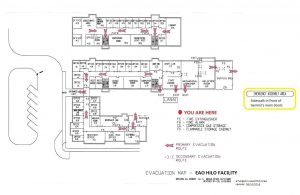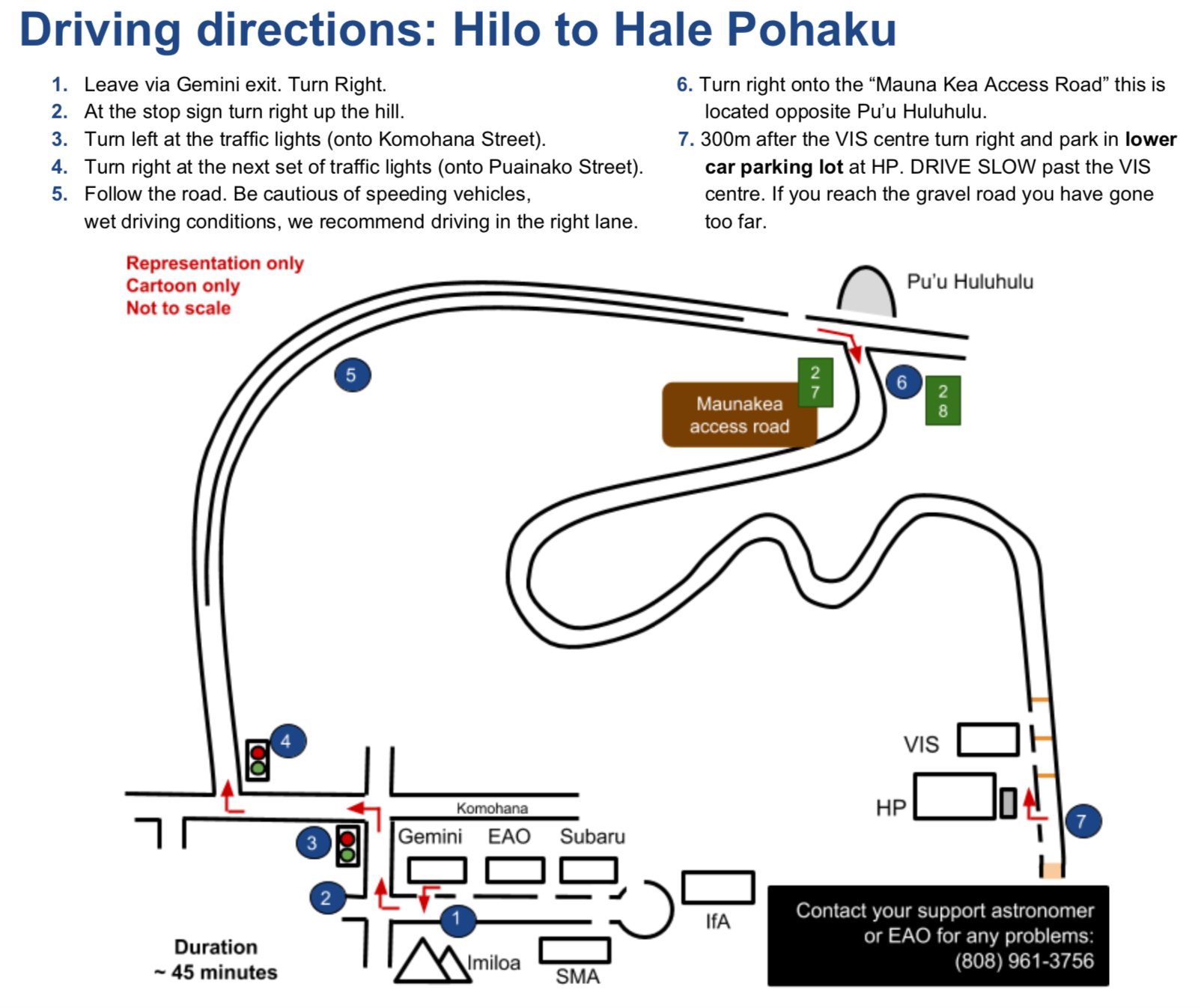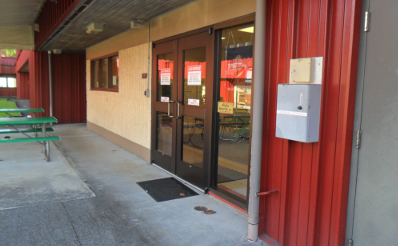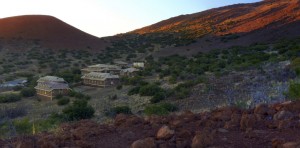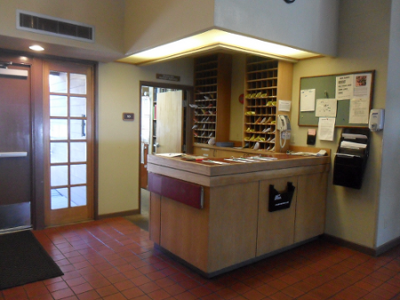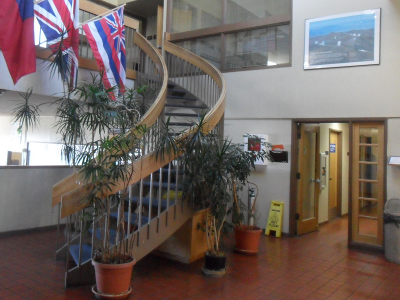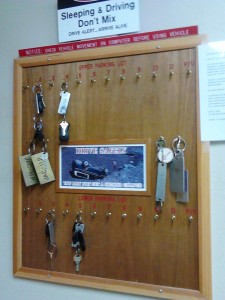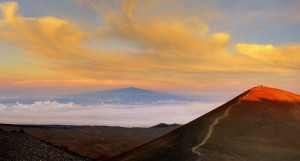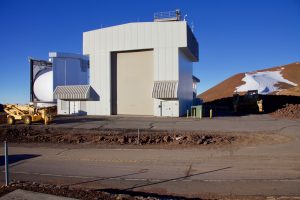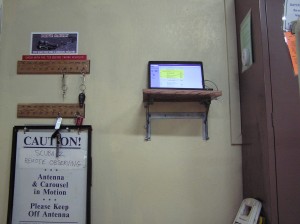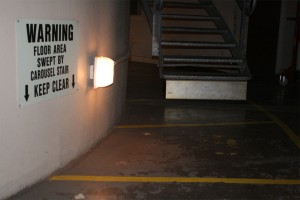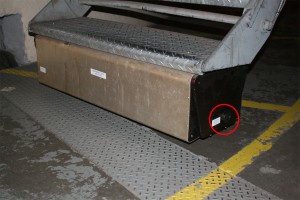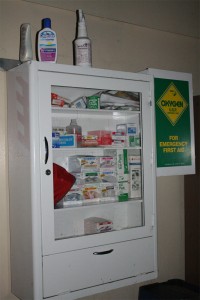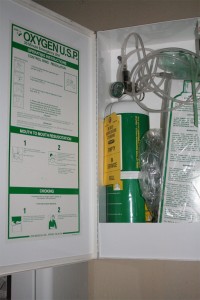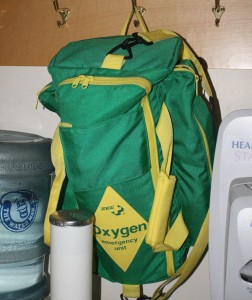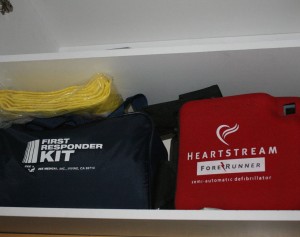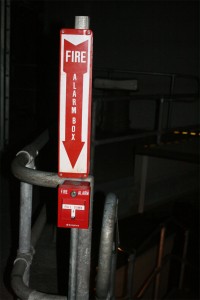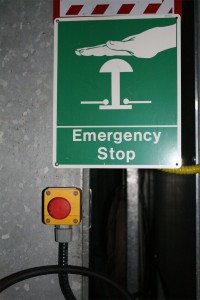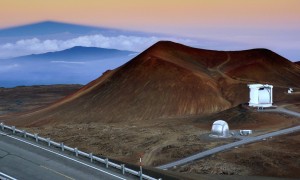These pages present all the relevant safety and logistic information for your visit to the EAO Offices in Hilo, Hale Pohaku (HP) and the JCMT. These pages are designed specifically with a visiting astronomer in mind but all visitors to EAO may find them useful. These pages are meant to complement the safety briefing that you will receive from your support astronomer or your EAO staff contact. These pages also provide a summary of the information that you should be familiar with during your visit. If you have any question please direct them to your contact or e-mail the help desk. A link to the full EAO Safety Manual can be found here.
All visitors entering EAO buildings, grounds, or facilities must comply with applicable health and safety policies and procedures. Visiting observers are issued a standard packet of information whose contents include the following safety related information: When you arrive at the EAO office in Hilo your support astronomer will: If you hear the fire alarm, evacuate the building and convene at the front of the Gemini building. If you find a fire: In addition your support astronomer will make sure you have: If you plan to arrive out of hours, you should contact your support astronomer in advance for instructions on how to get to the EAO and get the keys to your car. For your convenience it is strongly advised that visitors arrive between the hours of 9am and 4pm Monday to Friday. Visitors should, if possible, leave signed paperwork (Medical alert disclaimer form, TBD) with Reception. Additionally all observers will have to sign a waiver form to enter the UKIRT building. The UKIRT waiver form can be found here. It is expected that visiting observers will drive themselves in an EAO vehicle from the EAO Offices in Hilo to the base facility, Hale Pohaku. Classical departure from EAO in Hilo is 3pm. The classical return journey from HP to EAO is 2pm. Any changes to this must be cleared with the scheduler -usually via your Support Astronomer. Foreign visitors to Hawaii can drive a car with an international driver’s license (without an additional International Driver’s Permit) as long as it’s valid in the home country and is written in English. If the international driver’s license is in a language other than English, and the letters are not English (i.e. Japanese, Arabic, etc), an additional International Driver’s Permit is required. An international Driver’s Permit is a translation of an individual’s foreign license and is normally easy and inexpensive to obtain in the driver’s home country. Note that driving from HILO to HP is considered one of the most hazardous activities at EAO. Obey speed limits at all times. Reduce your speed if the conditions of the road so require (heavy rain, fog). When you arrive at Hale Pohaku you will need this combination code to get into the building (password protected). Once you are inside the Hale Pohaku facility take a moment to get orientated: Observers who are acclimatizing should not attempt to drive or travel to the summit unless they have permission from their support scientist or TSS. You will need to coordinate with your support astronomer and telescope operator the start of shift time. For support staff, the “start of shift planned departure times” can be found here (password protected). Visitors should note that smoking is prohibited at HP and the area around this facility. Finally visitors often note that they sleep much better when using the humidifier provided for guests within their rooms. You will also find moisturizer in the bathroom cabinet (behind the mirror) for your use and blackout blinds in all the rooms. The summit of Maunakea is located at 14,000 feet. At this elevation, the atmospheric pressure is about 40% less than at sea level. This poses significant health hazards. The effects on humans range from a minor discomfort to life threatening conditions. It is very important to understand the symptoms of altitude sickness and to be familiar with the procedures to prevent it and to respond to it. Please take some time to carefully read the Maunakea Hazards information sheet and the Preparation for Winter Weather memorandum. The EAO policy is to err on the side of safety when dealing with actual or potential mountain sickness. Visitors or staff experiencing symptoms should inform the Telescope System Specialist or Work Leader at once. A decision will then be taken on whether the individual should descend from altitude. In any case, nobody is allowed to spend more than 14 hours above HP during any consecutive 24 hours period. Considering the time it takes to drive from HP to the summit and back, this corresponds to less than 13 hours at the summit. TSSs will enforce this if necessary by switching the telescope off! TSSs have the EAO’s full support in this. Please inform the TSS if you are experiencing any of the signs or symptoms listed below, or if you have any other reason of concern. It is important to know and get used to what is “normal” for you at high altitude. We ask that you keep the TSS informed of how you are feeling throughout the night. Please be cautious even if you have had no previous issues at altitude before. The visit to the summit is not allowed if: You are advised not to go to the summit if: Other hazards: It is very important that observers are well rested and ensure they sleep as much as possible in their allocated room at Hale Pohaku between summit shifts. If any issues regarding sleep comfort arise please contact your support scientist or TSS as the issue may well be easily fixed. The TSS is the work leader and safety officer during the night shift. The TSS has the authority to take any action deemed necessary for the safety of the observer and of the telescope. The images shown here are not intended to replace a full health and safety briefing. These images are to be used as a reminder of the importance of health and safety at the JCMT and some of the key points to remember. When entering and leaving the JCMT always make sure you clearly indicate your presence in the building by entering your name (or using a visitor check in) and checking the box next to it in the “In Building” column on the check in computer. Leave all vehicle keys under correct hook, just left of the check in computer When walking around the lower floor be aware that the upper floor rotates. This means that the carousel stair may move at anytime and you should use caution when walking on the yellow marked region around the plinth area. At the bottom of this staircase is a kick plate. This prevents the stairs from running over obstructions. Should you accidentally kick this the reset button is found to the lower left. Swivel the cover and push in to reset. You should also inform the TSS. A first aid cabinet and a portable oxygen supply (one of two at the JCMT) can be found outside of the kitchen area. Please inform support staff if supplies are low. Be careful when taking medication up at altitude. In the vestibule to the control room on the observation floor there is a second AED device and a first responder kit. There is also the second portable oxygen supply. This oxygen comes with a carrier for easy transport. You should familiarize yourself with the location of fire alarm pull stations, and emergency stop buttons. If you hear the fire alarm, evacuate the building and convene outside. Follow EAO staff to the emergency assembly area. If you find a fire: Wireless: The summit is a wireless-free area. Please turn off the wireless adapter on your laptop and place your mobile phone into airplane mode. This also includes the Bluetooth radios in laptops, tablets, phones, watches and any other “smart” devices. If you wish to use your own laptop in the control room and it lacks an internal wired ethernet port (e.g. some newer Apple Macs that rely on Thunderbolt ports), please remember to bring the appropriate dongle. Maunakea is a sacred place in Hawaiian culture. It is considered the home of the snow goddess Poli’ahu, and many other deities. It is also an important site for traditional cultural practices, prayers, burials, and consecration of children. As a result we emphasize the importance to visitors in respecting this aspect of the mountain. Although it is often translated as “white mountain” because of the snow that occasionally covers the summit, Maunakea is short for Mauna a Wakea. In the Hawaiian story of creation, Wakea is the sky father, husband of Papa, the earth mother, who gave birth to the islands. Hawai’i Island is their eldest child, and the mountain of Maunakea is that child’s piko, or navel. In your visit to Maunakea, remember that the whole mountain is sacred, celebrated, and culturally sensitive. We do not have a complete map of the altars and burial places therefore the rules and indications provided in this page apply to any place on the mountain. Also remember that opposition exists amongst a segment of the native Hawaiian community to the presence of the telescopes on Maunakea. “Take nothing but pictures, leave nothing but footprints” Hiking and exploring the mountain are potentially dangerous activities, as is driving on the summit road, especially if you don’t have much experience. DO: DON’T: EAO Hilo Office
Information for visitors
Arrival
Forms
Driving - Hilo to Hale Pohaku
Driving notes
Hale Pohaku
High Altitude Safety
High-altitude sickness
Major symptoms
Major signs
Minor symptoms
Severe unrelenting sudden headaches
Slurred speech
Mild shortness of breath
Shortness of breath
Visual Disturbance
Dizziness
Chest pain
Loss of Coordination
Lightheaded
Abdominal pain
Paralysis
Headaches
Seizures
Visual Change
Collapse
Palpitations
Slow or Rapid Heart Beat
Chest Tightness
Labored Breathing
Nausea
Unrelenting vomiting or nausea
Preventing high-altitude sickness
Safety at JCMT
General Safety Information
Visual Guide for JCMT safety equipment
Fire
General procedures
Maunakea - a sacred site
Hiking on Maunakea



